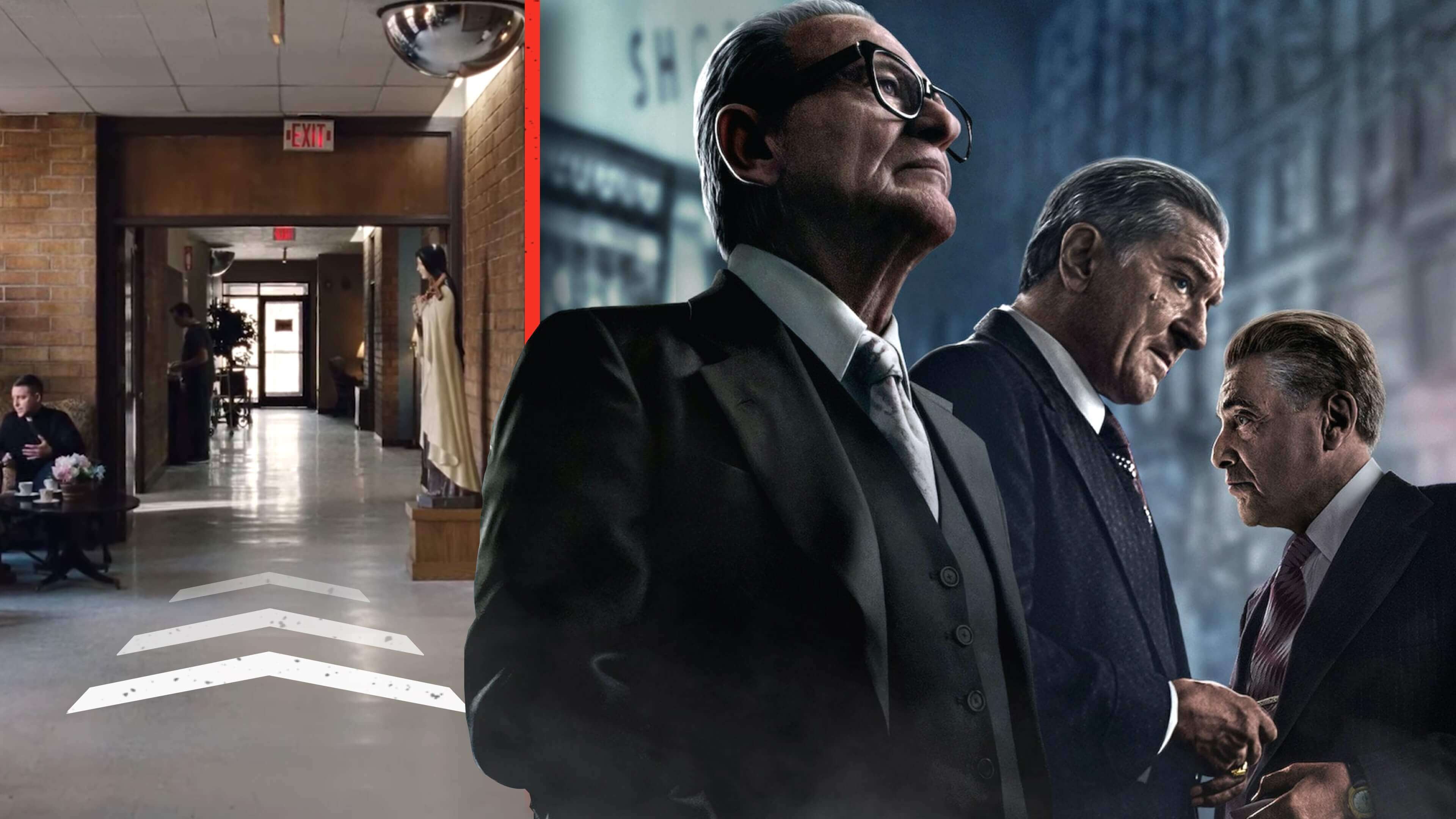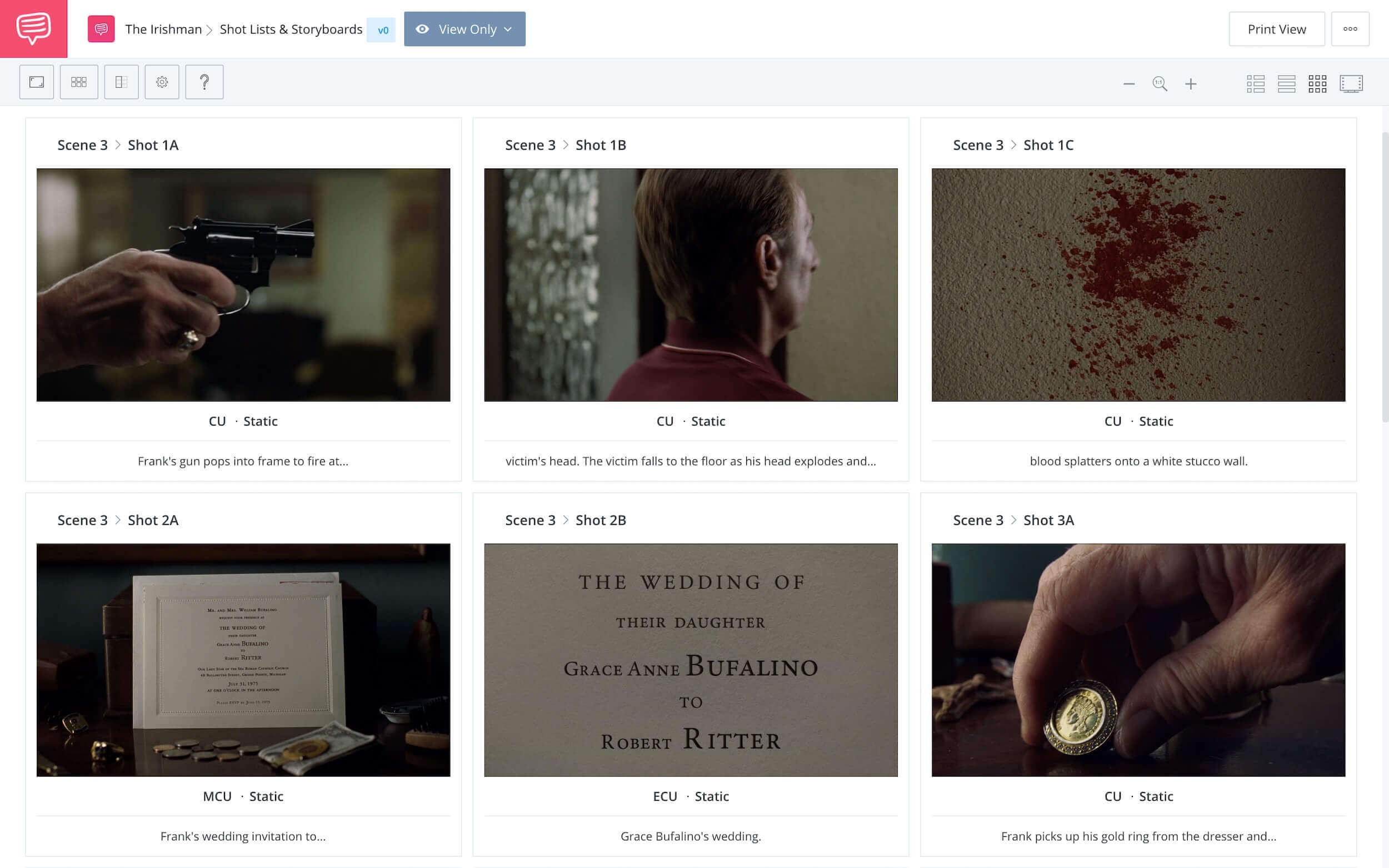By now, you’ve heard the jokes. One Netflix user timestamped The Irishman scene by scene so people could watch it as a mini-series. Others have recommended Martin Scorsese’s 209-minute epic to pass the time amidst the coronavirus outbreak: To survive months in isolation, just watch it once!
We get it: The Irishman is long. Such is the nature of a film that spans six decades within its storyline.
We’re not here to look for every Easter egg allegedly hidden inside Scorsese’s sprawling true crime narrative. But if you’re a filmmaker looking to leave a lasting first impression on your audience, there’s much to learn even from The Irishman’s opening scene alone.
Let’s break down how Scorsese opens an epic.
The Irishman Scene Breakdown
Announcing authorship
Scorsese’s best movies carry imprints of his authorship — religious guilt, codes of masculinity, and corruption, to name just a few. All three of these themes are at play in The Irishman from its very first scene.
How? It boils down to what, and who, Scorsese puts in the frame, and how he guides us through the world of the film. In the original script for The Irishman, the opening scene was quite different and it's interesting to see theorize why Scorsese went with this opening instead. If you're curious, you can download The Irishman script along with our complete breakdown of this mobster epic.
Influences Behind The Irishman Scenes
Introducing an antihero
Scorsese has long professed his love of the films of John Ford, and The Irishman appears to wear Ford’s influence on its sleeve. As soon as his opening tracking shot fades in from black, Scorsese’s framing nods to the iconic opening and closing shots of Ford’s The Searchers: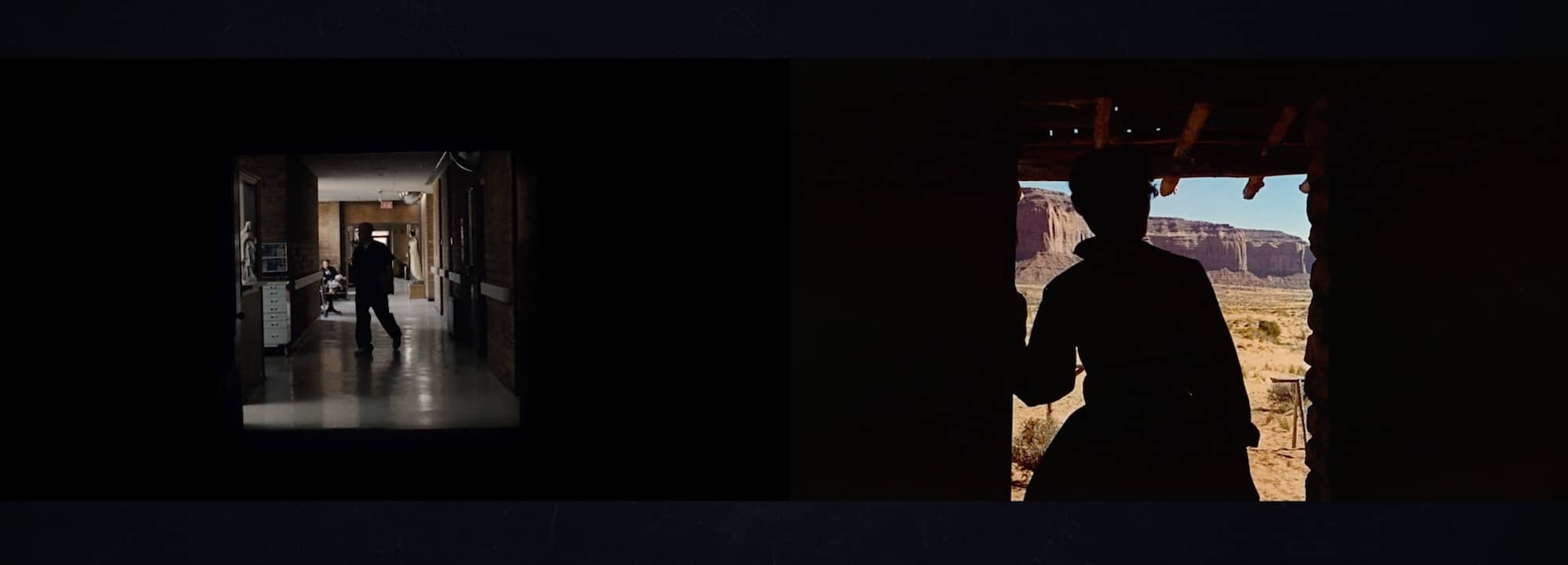
Scorsese's visual homage to The Searchers
Scorsese may well be conscious of the parallels between the antihero of The Irishman, Frank Sheeran (Robert De Niro), and the antihero of The Searchers, Ethan Edwards (John Wayne).
In an interview with American Film Institute, Scorsese recalls his first impression of Ethan when he saw The Searchers in 1956: “All of the sudden, this lonely character comes out of the desert… and he’s absolutely terrifying.”Martin Scorsese on The Searchers
It’s fitting, then, that Scorsese opens The Irishman by evoking Ford’s style. Like Ethan, Frank is a lonesome, fearsome figure whose story unfolds amidst rapid changes in American life.
If you’ve never seen The Searchers or even heard of John Ford, that’s OK. Scorsese’s framing technique doesn’t rely so much on homage that it alienates casual viewers. It’s subtle and simple enough to make the scene accessible to any audience.
By pushing the camera through the darkness and into the ward of Frank’s nursing home, Scorsese makes it clear that we are entering a world and about to be told a story. This is just one of many elements in Scorsese's directing style.
Key Elements of The Irishman Scenes
Let props and extras tell the story
Still, once we’re inside the world of The Irishman, which made our list of best Mafia movies, Scorsese doesn’t rush to hear from its narrator.
Before we meet Frank, the camera strolls slowly through the hallways of the nursing home so viewers can digest key elements of his rather tranquil environment:
- Doctors and nurses
- Statues of the Virgin Mary
- A visiting priest
- Residents and their visiting relatives
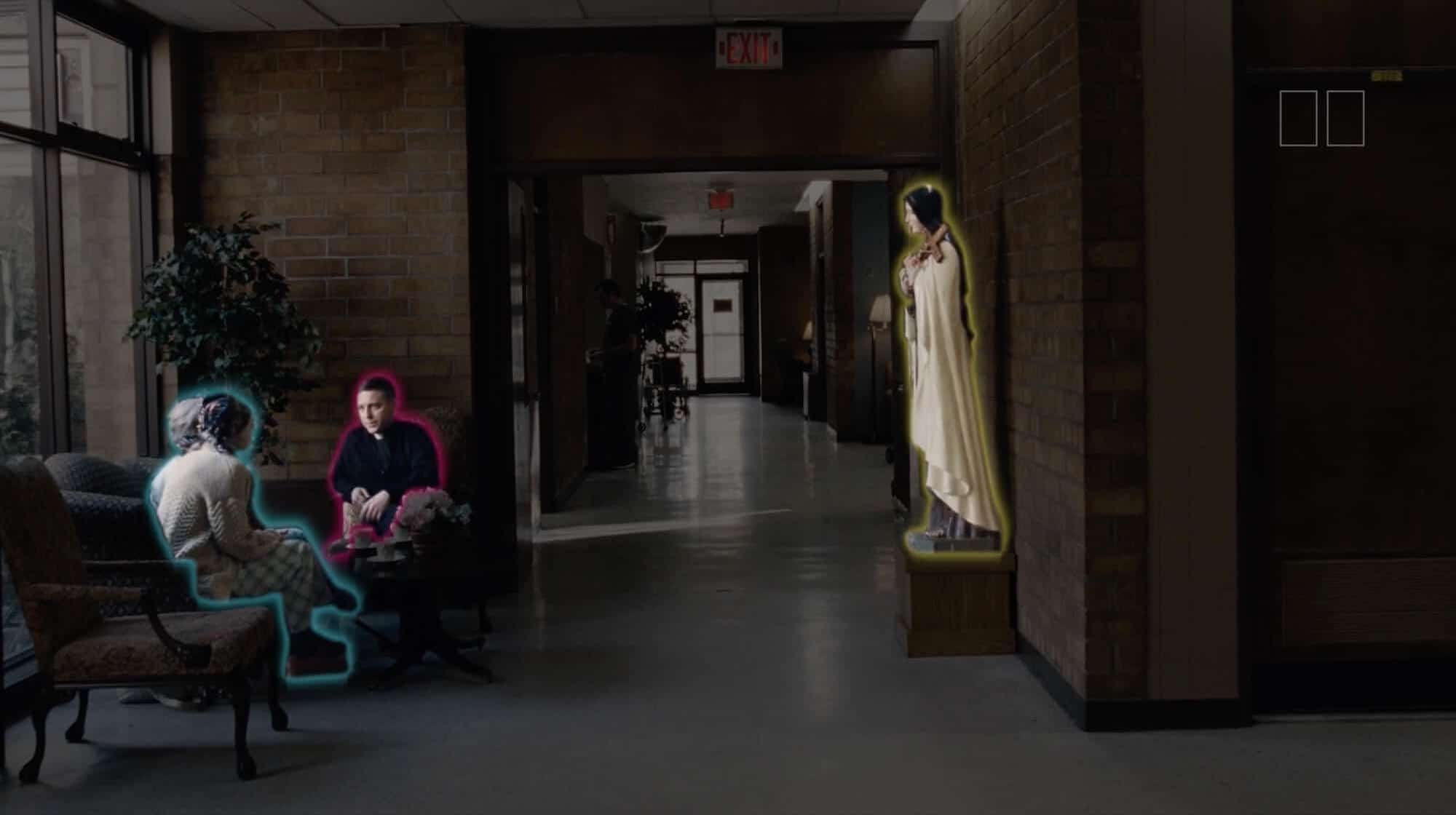
Frank's Retirement Home Set Design
When we meet Frank, he’s in the elder years of a life lived in sin. The people and props we pass along the way hint at his mortality and search for absolution.
At the same time, Scorsese wants us to know that no amount of religious guilt will make Frank completely renounce his past. And no prop signifies more about the depth of his mob ties than his giant golden ring.
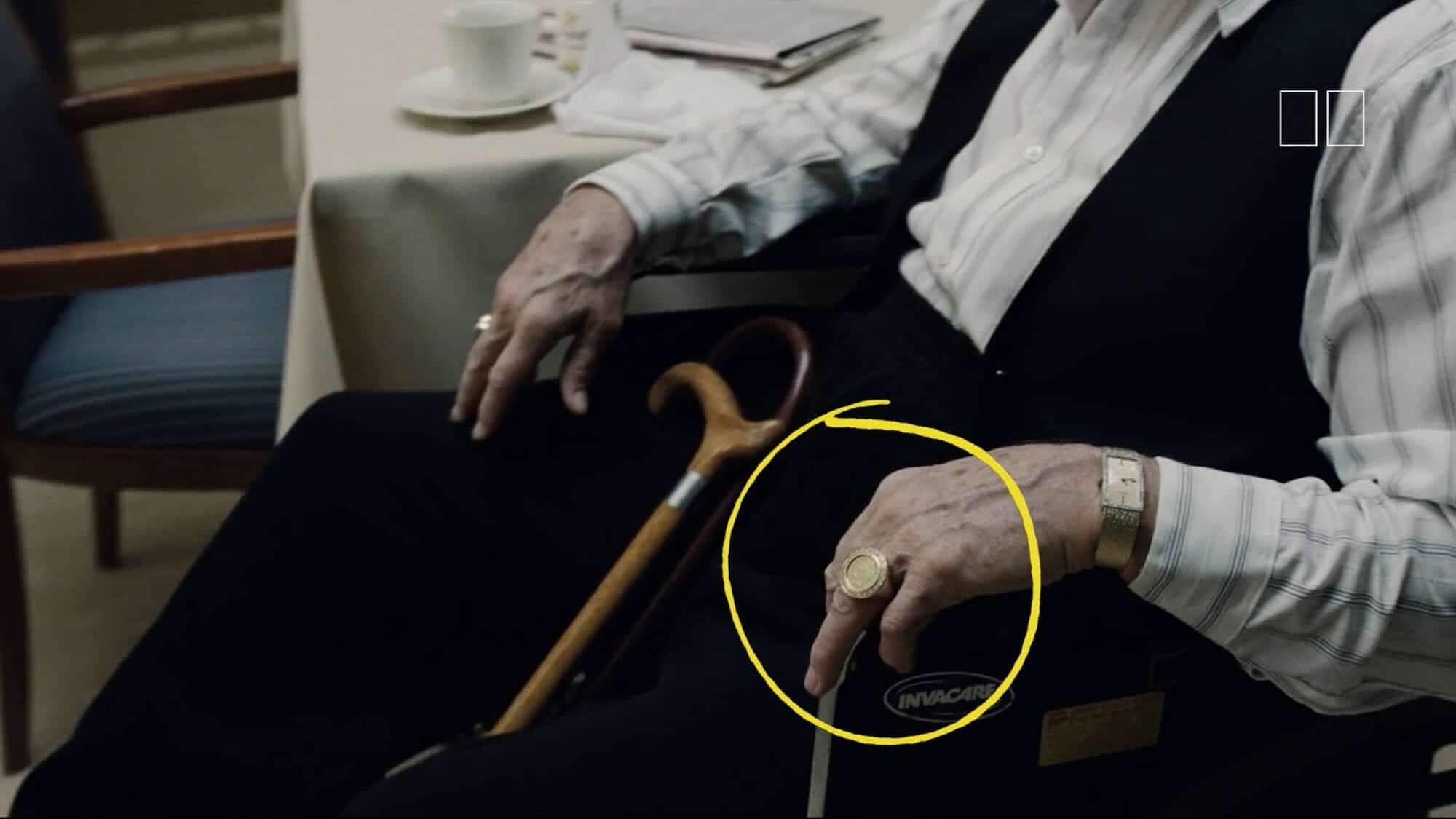
Frank's Gold Ring
As the camera arcs around Frank — whose back is turned away from us when we first get a glimpse of him in his wheelchair — Scorsese pays special attention to the ring. Later in the film, we’ll learn how Frank got the ring and who gave it to him. But for now, we can at least infer that it’s significant to both Frank and to the story he's about to share.
Related Posts
THE IRISHMAN’S UNRELIABLE NARRATOR
Walking audiences through your world
If we've learned anything from Scorsese's quotes and interviews, its that he goes above and beyond to create worlds around his characters. One way Scorsese aligns audiences with his vision is by turning his characters into our own tour guides of the gangster lifestyle.
Of course, Goodfellas is the most celebrated (and imitated) example of this — but many of his other works use the approach, and The Irishman is no exception to this.
When The Irishman’s opening tracking shot comes to a halt, Scorsese puts the audience up close and personal with Frank. That’s when Frank begins to tell his tale… except not out loud. It’s in voice-over: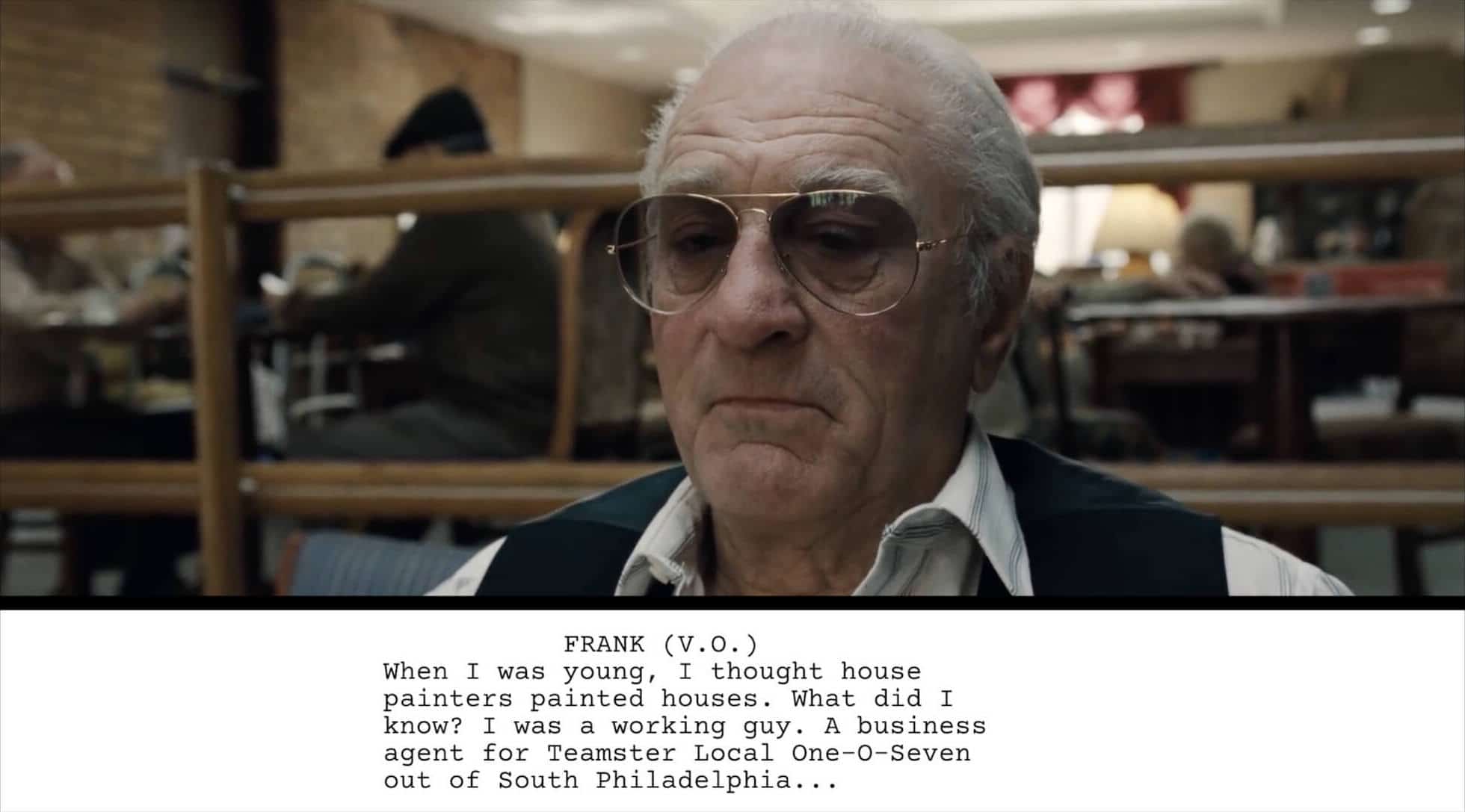
Frank's anecdote V.O.
This moment is striking. Frank could have easily opened his mouth the moment we met him. But instead, we hear his voice as we watch him sit silently, just before he finally breaks the fourth wall.
When Frank finally does speak, his dialogue is a continuation of what he narrates in voice-over. This creates an intriguing interplay between Frank’s internal and external monologues — perhaps urging the audience to question whether or not he’s a truly reliable narrator.
Then, suddenly, we’re thrust into a different time and place. As Frank reminisces, the cutting scheme quickens, and Scorsese hits us with a litany of images — each of which revolve around a murder Frank committed and a wedding he attended.
We’ve mapped out this stretch of the scene with StudioBinder’s storyboard software. Notice how each shot cues us into Frank’s perspective and his way of life:
The Irishman • Frank's Memory of a Murder and Wedding • View Storyboard
This sequence is expertly edited to capture the jagged and violent nature of Frank's work. This, of course, was executed by one of Scorsese's longest and most important collaborators — Thelma Schoonmaker. Here's a quick video on their working relationship and some creative decisions behind editing The Irishman.
Thelma Schoonmaker Editing with Scorsese • Subscribe on YouTube
One last time, Scorsese returns to Frank as he continues to narrate his life from his wheelchair. Frank seems friendly — a familiar face you might run into in your own neighborhood.
Although The Irishman’s opening shows flashes of his cold and brutal nature, the eerie calm of his present lulls us into his inner-circle. By bringing audiences closer to Frank, Scorsese prepares us to travel the long and winding road of his past.
Related Posts
Up Next
Read The Irishman scene by scene
We’ve talked about Scorsese’s unique imprint on The Irishman, but he isn’t the film’s sole author. Next, we’ll take a closer look at screenwriter Steven Zaillian’s script. Download it in its entirety and join us as we break down its characters, quotes, and structure.
Up Next: Breaking Down The Irishman Script →
Showcase your vision with elegant shot lists and storyboards.
Create robust and customizable shot lists. Upload images to make storyboards and slideshows.
